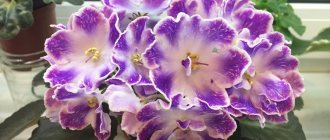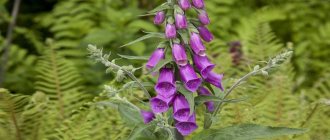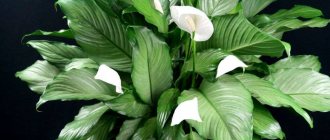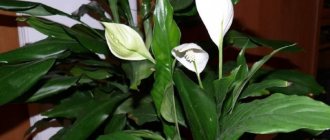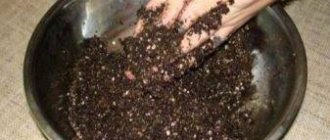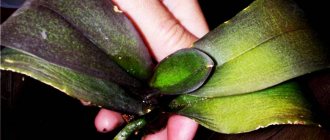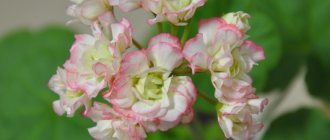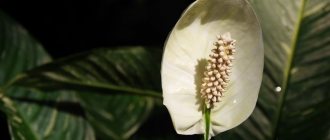Subvarieties and their photos
Silvio
The variety is characterized by graceful inflorescences and a lush bush.
The flower size is 75 cm. Silvio is characterized by rapid growth. The surface of the leaf plate is smooth, length 30 cm, edges wavy.
Lauretta
The variety was obtained in 2001. The height of the bush is 80 cm, and the width is 85 cm. The leaves are elongated and oval in shape, have light veins, and the inflorescences are directed upward on a high petiole.
Spathiphyllum Benito
The peculiarity of an adult plant is its ability to produce up to 15 inflorescences during the flowering period. The plant is also resistant to external factors: light and excessive watering.
The size of the bush is compact, the leaves are narrow, and their length is 35 cm. Their surface is glossy and smooth.
Spathiphyllum Chico
This variety grows to large and voluminous bushes. Its height is 70-75 cm. The flowers are large, snow-white, and have the shape of a cone. The variety is easy to care for.
If you are interested in this unusual and beautiful flower, then we suggest that you familiarize yourself with other types of spathiphyllum. We will tell you in detail about growing and caring for varieties such as Strauss, Cupido, Wallis, Picasso, Alana, Domino, Sensation, Chopin, as well as varieties with red and white flowers.
Big and strong
Only the cannoleaf (Spathiphyllum Cannifolium) plant species can boast such dense leaves, which reach 40 cm in length. The visible side of the bract is white, but the invisible side is green. The inflorescences emit a rather pleasant aroma.
Spathiphyllum cannofolia
Spoon-shaped spathiphyllum (Spathiphyllum Cochlearispathum) can most often be found in Brazil. Usually grows up to a meter in length. The leaves are thin, shiny, elliptical in shape. The width of one such leaf is 12-15 cm, and the length is 30-40 cm. The petioles sometimes grow up to 70 cm. The shape of the bedspread resembles a spoon, which is why this plant was so named.
Spathiphyllum Floribundum has fairly dense leaves. A fairly noticeable vein is visible in the center of each leaf. Leaf length - 20 cm.
The petiole is thin, its length is usually 10 cm. Compared with other varieties, the perianth is small, its length varies from 4 to 8 cm, and its width up to 3 cm. It pleases with its flowering almost all year round.
How to propagate?
There are several ways to propagate spathiphyllum, each of which has its own rules and nuances.
Cuttings
This method is best done in spring or summer.
- First of all, cut off the leaf rosette, which is then placed in water.
- When the roots form, you can plant the plant in the prepared soil.
Dividing the bush
This method of propagation is best done in the spring.
- The spathiphyllum bush needs to be divided into parts, each of which has at least three leaf rosettes.
- They are planted in a new pot at the same depth as in the previous one.
- Before this procedure, the roots must be untangled and washed with water.
Seeds
- For this method, the seeds are planted in a pot with previously prepared soil.
- This pot is covered with film, the soil is sprayed until the first seedlings appear.
- After the first 2-3 leaves appear, the plants need to be planted in separate pots.
Bloom
When and how?
Spathiphyllum, as a rule, begins to bloom at 6-7 months, and its inflorescences last longer than a month. Due to this feature, its flowers are often used for cutting.
Care before and after
- Spathiphyllum prefers a warm and humid climate, so it needs careful care at home.
- For rapid growth, it needs a large amount of light and a variety of feedings. Fertilizers that contain calcium and phosphorus are perfect for this. Preparations containing nitrogen, on the contrary, can harm the plant. Their use should be stopped.
- Spaciphyllum requires moderate watering as the soil dries out. At the same time, complete drying out should not be allowed.
- To prevent the leaves from losing their elasticity after flowering, the dried bud must be cut off. After this, you no longer need to apply fertilizer. The foliage must be sprayed regularly instead of the usual watering.
What to do if it doesn't bloom?
Sometimes it happens that spaciphyllum does not bloom, although all care instructions are followed correctly. There are various possible reasons for this phenomenon.
- A common cause is lack of lighting. If the plant does not receive enough light, it should be placed on the sunny side.
- Sometimes spaciphyllum drops its buds and stops blooming if the ground dries out. This indicates that he does not have enough fluid. In this case, you need to water the flower more often and use soft, filtered water.
- In addition, spaciphyllum will not bloom if planted in a pot that is too small. For normal development, it needs the roots to occupy the entire container. Therefore, you need to carefully choose a pot for the plant.
Plants for a children's room: spathiphyllum: 4 comments
What a cool flower! As soon as we renovate the nursery, I will put spathiphyllum, hyacinth, and myrtle there, on your advice!
Hyacinth should not be placed in the nursery; it has a very strong smell and can cause headaches. It's better to leave it in the common room and enjoy it during the day.
I bought this flower a year ago. I can only say one thing, it is very unpretentious and pleases with its new shoots, and of course flowers.
I just read on another site that spathiphyllum is poisonous and if a child accidentally swallows a piece of the plant, there may be problems, 10 houseplants that are deadly for health. It is unlikely that there is at least one living space where there are no indoor plants. They decorate homes, fill them with comfort and, as many believe, clean the air of toxic substances, electromagnetic radiation and harmful bacteria. However, scientists have found that some types of decorative flowers can cause significant harm to the health of humans and domestic animals. The choice of indoor plants must be approached very responsibly, especially if there are small children in the house. In nature, there are a lot of household flowers that are dangerous to health, but during tests, doctors identified 10 plants that should be gotten rid of first:
Sansevieria (Mother-in-law's tongue). Although it does an excellent job of purifying the air, it should still be avoided. This plant can cause nausea, excessive salivation and sore throat.
Aloe Vera
Everyone knows the beneficial properties of aloe, but you should remember one very important rule - it should not be used internally. This will lead to intestinal irritation
And if this is not very dangerous for humans, then for animals such experiments can end very sadly.
Spathiphyllum. Causes allergic reactions. Once in the human body, it leads to swelling of the mouth, tongue, and lips. In more severe cases, it can cause death.
Spathiphyllum is a plant with bright, glossy foliage and unusually shaped flowers that will gracefully and elegantly decorate any room. It belongs to the tropical, evergreen representatives of the Araceae family. Some call it the “white sail” for its resemblance to a ship’s sail. Sometimes you can find another name - spathiphyllum Women's Happiness, as it is believed that it will be the best gift for a woman.
What depends on the type?
When growing spathiphyllum, you need to know what species it belongs to. After all, the conditions of detention depend on this. Spathiphyllums are unpretentious, but some species are quite capricious. For example, when the earthen clod dries out, spathiphyllum cannofolia will simply shed all its leaf mass. But mini spathiphyllum will respond to waterlogging of the soil by rotting its roots.
All spathiphyllums do not tolerate direct sunlight, drafts, and do not like large temperature changes - which is why they are not transferred to balconies in the summer. Most spathiphyllums require high air humidity and regular spraying. You also need to take into account the size of the species.
Giant spathiphyllums will be more appropriate in a spacious room; dwarf species will fit perfectly on an indoor window sill.
An online magazine for parents about the education, upbringing and development of children.
Today we’ll talk about an extremely rewarding plant for a child’s room – spathiphyllum. Why grateful? If you place the spathiphyllum in moderate shade and take at least a little care of it (regularly water and feed it once every two weeks from spring to autumn), then the flower will reciprocate your feelings, blooming very often and profusely with beautiful white flowers that look like sails . It is precisely for the resemblance of spathiphyllum flowers to sails that people often call it a sailboat. By the way, spathiphyllum has another popular name - women's happiness. They say that if you receive spathiphyllum as a gift, then female happiness will not keep you waiting.
How is spathiphyllum useful for a children's room?
Firstly, it is very beautiful and will delight the child’s eye. As we have already said, spathiphyllum blooms for a long time, from spring to mid-summer, and often blooms again in the fall. A good decoration for a child's room, isn't it?
Secondly, the leaves of spathiphyllum are quite voluminous, and the total leaf mass of the plant is large, which is favorable for saturating the children's room with ozone. It will be easier for the child to breathe where spathiphyllum grows.
Thirdly, it is generally accepted that spathiphyllum has strong energy, helps to concentrate and increases performance. It is difficult to prove or disprove this, but you can try by placing spitiphyllum near the student’s workplace.
Spathiphyllum is not poisonous and is not an allergen.
It is better to plant spathiphyllum in the spring, taking a small bush from someone. And you can buy it at any time of the year. If you hurry now, then in the spring the spathiphyllum will delight you and your child with the first flowering in a new place.
Please note that the plant grows quickly and very soon from a small bush you will get an excellent plant - a source of positive emotions and ozone! This is a spathiphyllum that is a useful plant for a child’s room.
Spathiphyllum red
Most nurseries grow spathiphyllums with red or pink bracts. What is this rare variety of a well-known flower? These are anthuriums - close relatives of our plant, belonging to the aroid family. Originally from South America.
The leaves of this plant are dark, usually resembling a heart shape, but they do not grow from the ground, they have a stem. It is thanks to selection that they delight gardeners with their bright shades.
Anthurium, although beautiful, is too pretentious. Dry air is unacceptable for it; watering must be timely. If the conditions are not met, the handsome man will simply wither away.
Thanks to the tireless work of breeders, new varieties of this wonderful tropical flower appear year after year. They are so impressive and beautiful that sometimes it’s even difficult to make a choice in favor of one.
Reproduction
The plant reproduces in 3 ways:
- Dividing the bush. It is better to transplant in the spring. The separated part of the plant must have at least 3 strong leaf rosettes and a fragment of a healthy rhizome. Before dividing, the root should be well saturated with water, washed, and untangled.
- Seeds. With this propagation method, the plant will bloom only after 3 years. The advantages of this method include the fact that spathiphyllum grows more hardy and strong, less demanding on air humidity.
- Cuttings. It is carried out in the warm season. Cut off the leaf rosette and add water to it until the root appears. Then they are transplanted into a pot of a suitable size and covered with film.
Popular varieties of spathiphyllum
Active breeding work to develop new varieties of “flower-sail” began in the second half of the last century. Although they knew about it back in the 19th century, when the German scientist Gustav Wallis gave its botanical description, thereby introducing the world to a beautiful plant. Today there are about 45 types of flowers. They all have one or another distinctive feature; they can be huge in size, but there are also tiny varieties. For propagation at home, only certain types of spathiphyllum are used - they are the ones that have become the most popular among flower growers. You can see the article: Azalea: the best varieties of culture.
Spathiphyllum Wallis - the ancestor of many varieties
Named after the German botanist who first discovered this species, Spathiphyllum Wallis gave rise to many famous varieties and varieties of the flower.
All of them have earned the love of flower growers around the world for the combination of two wonderful qualities: exotic appearance and simplicity of maintenance. All varieties included in this species are small in size. Their average height does not exceed 30-40 cm. Corn-shaped inflorescences, 3-4 cm long, are surrounded by a white, sail-shaped petal, the color of which gradually turns green towards the end of flowering. The same thing happens with the arrow flower. Initially it is creamy, but then turns green along with the petal.
Chopin variety – beautiful music of nature
Spathiphyllum Chopin or Chopin is especially famous. The scientific name sounds like Spathiphyllum Chopin. The variety has become widespread, first of all, for its beauty. But ease of care also played a decisive role: Chopin spathiphyllum is not so difficult to grow at home.
Features of foliage
One of the advantages is the compactness of its bush - 35-40 cm. This allows it to be kept in rooms with different dimensions. Its appearance is classic for this culture. The elongated oval leaves are pointed at the ends. Their veins are clearly and symmetrically drawn across the entire sheet. The stripes on the leaves are deeply pressed, which creates a beautiful relief on the surface and makes the plant more decorative. Healthy foliage is rich, green, shiny, as if polished.
Flowers are the main decoration
I fell in love with this variety for the beauty of its flowers. They are bright, white, with a slight greenish tint. The sail is elongated, pointed, with veins, also painted in a delicate white-green color. It is valued for its ability to emit a pleasant, not pungent aroma in the afternoon. In order for spathiphyllum to bloom, proper care is necessary.
Variety Domino - a play of colors
Spathiphyllum Domino has a rare color for this indoor plant - its variegated, dark green, white-speckled foliage will enliven any office or living space. Despite the fact that this flower is very exclusive, it is completely unpretentious and easy to care for, so it is suitable even for beginners in floriculture. Its compactness also speaks in favor of its purchase - the bush does not grow higher than 35 cm. In the morning, graceful, white flowers with soft green veins will saturate the air with a subtle aroma, which gradually disappears by midday.
Common types of spathiphyllum with photos
Spathiphyllum has more than forty-five species, among which there are dwarf plants and real giants. In addition to size, they differ in foliage color. At the moment, there are hybrid varieties of spathiphyllum, which are characterized by greater endurance and adaptability to indoor growing conditions, as well as long flowering.
Spathiphyllum profusely blooming
The birthplace of this species is considered to be Colombia, where it grows in tropical conditions with high humidity. Spathiphyllum profusely flowering grows up to half a meter in height and has an underground creeping stem.
The numerous green, pointed foliage is lanceolate in shape, up to twenty-five centimeters long and up to twelve centimeters wide. It is located on small petioles (about fifteen centimeters).
The peduncles of spathiphyllum profusely flowering reach twenty-five centimeters in length, the inflorescence itself is formed from a green cob (up to eight centimeters in length) and an elegant, concave spathe, having a broadly lanceolate shape, up to twelve centimeters in length and up to six centimeters in width.
Abundant flowering lasts a long time , which is why this type of spathiphyllum is considered a valuable potted plant. The flowers are great for cutting and stay fresh in water for a long time (up to three months).
Spathiphyllum Chopin (Spathiphyllum Chopin)
Spathiphyllum Chopin is a hybrid variety. It is one of the most common plant varieties grown at home due to its unpretentiousness.
Despite its compactness and small size (no more than thirty-five centimeters in height), it has a very attractive appearance. The shiny foliage has a rich green color and depressed veins. The bedspread is characterized by a highly elongated shape and a white-green hue.
Spathiphyllum Wallis
This species reaches fifty centimeters in height, it has a short rhizome and dark green oblong, long (more than twenty-five centimeters) leaves, collected in an elegant rosette, and thin petioles.
As you can see in the photo, the spadix and the narrow, long spathe are pure white in color, and towards the end of flowering they turn green. Spathiphyllum Wallis is a shade-tolerant plant that does not require care. At the same time, it blooms for a long time and abundantly . There are dwarf forms of this species.
Spathiphyllum Sensation
Spathiphyllum sensation is a large variety of Dutch origin. The plant can reach more than one and a half meters in height. Very large leaves grow up to one meter in length and forty in width, they have a dark green tint and clearly defined thick veins, inflorescences can be up to half a meter long. Spathiphyllum Sensation is perfect for growing in large shaded areas.
Beautiful examples
In residential premises, culture acts as a decorative item. Plants are planted in snow-white pots of various geometric shapes, emphasizing the color of the bracts and highlighting the rich tone of the foliage.
Flowers can be planted in groups in wide planting containers. This method is used to visually divide space into zones in residential and office premises, as a decoration for various massive interior items: dining tables, chests of drawers, and so on.
In landscape design, spathiphyllums act as a border or flower arrangement. They require high-quality soil drainage, its composition and care as the plant grows.
An overview of the types of spathiphyllum is presented in the following video.
Spathiphyllum is a stemless perennial from the tropics. Most flowers similar to spathiphyllum belong to the araceae family. This group includes decorative foliage and beautiful flowering plants.
Diseases and pests
- Spathiphyllum diseases most often affect the leaves of the plant. One of the most common problems when growing is yellowed leaves. This happens if the plant is rarely watered.
- If spathiphyllum does not have enough moisture, the leaves dry out and curl. If the lighting is too bright or the plants are exposed to direct sunlight, the leaves may become pale and fall off. If the foliage, on the contrary, turns black, the reason is most likely a disease of the entire root system. This can happen when there is an excess of water and fertilizer.
- A dangerous pest for spathiphyllum is the spider mite. It envelops the inside of the leaf with its web, which leads to its drying out. In order to get rid of the pest, you need to use an onion or soap solution, which is used to clean the leaves from cobwebs.
- Aphids may appear from the bottom of the foliage, sucking the juice from the plant and multiplying very quickly. They get rid of it with the help of nicotine sulfate. But this solution should have a low concentration.
- If the leaves become covered with dark spots, the cause may be scale insects, a common pest. You can fight it with a soap solution to which tobacco or kerosene is added.
Spathiphyllum Sweet Chico is an ideal indoor plant that will help create coziness and a pleasant atmosphere. If you follow all the rules for caring for the plant, it will become a real decoration of your home.
If you find an error, please select a piece of text and press Ctrl+Enter.
https://stroy-podskazka.ru/spatifillum/sorta/vidy/https://pocvetam.ru/komnatnye-rasteniya/dekorativno-listvennye/spatifillum-svit-chiko.htmlhttps://selo.guru/rastenievodstvo/derorativ/ spatifillum/vidy-sp/svit-chiko.html
Diseases and pests
Most often, diseases affect the leaf blade, resulting in the following problems:
- Yellowness of leaves. It occurs when watering is infrequent and the humidity in the room is too low.
- Drying and curling of leaf tips. This problem occurs when there is insufficient humidity and cold air.
- Pale leaves. The reason is that the lighting is too bright.
- Leaves may turn black if the root system is diseased. And this happens as a result of excess moisture. Also, blackness on the leaf plate is the result of unbalanced fertilizing.
Dangerous pests include:
- Spider mite. It is located on the inside of the leaves, enveloping it in a cobweb. After a while, the leaf plate dries out. To combat, use a soap solution, only first clean the leaves from cobwebs. Onion solution (100 g of peel and 5 liters of water) is also effective.
- Aphid. It settles at the bottom of the leaf blade. This insect is characterized by rapid reproduction. It feeds on the sap of the plant, causing the leaves to curl. To combat, use a solution of nicotine sulfate (1 g per 1 liter of water).
- Shield. It covers the leaf blade with dark spots. For processing, a soap solution with the addition of kerosene and tobacco is used.
Fertilizers
Blooming spathiphyllum needs bait. But they should be added when the plant has not yet “acquired” flowers. For constant complementary feeding, mineral fertilizer (preferably with potassium and phosphorus) is made very weak - 1 g. diluted in 1 liter. water.
Fertilizers are added once every 2 weeks. Before doing this, it is recommended to soak the soil well with water. In winter, feeding indoor flowers is reduced to once every 5-6 weeks.
A young plant does not need additional feeding.
Video
Name: Spathiphyllum Sweet Chico
Homeland: South America, Malaysia
The genus Spathiphyllum unites more than 30 tropical plant species originating from South America and Malaysia.
All hybrids grown as houseplants are derived from Spathiphyllum wallisii, native to Colombia. This is a low plant with paddle-shaped glossy bright green leaves about 30 cm long, with wavy edges and pronounced veins. Small and round true flowers of creamy white color are collected in an inflorescence (small spadix) wrapped in a white bract (spread). As they ripen, both the cob and the spathe acquire a green color. Spathiphyllum flowers are very stable and bloom for a long time. Many decorative varieties and varieties have been developed, both small ones, for example “Small”, which is widely used in compositions, and very large ones, for example “Mauna Loa” and “Giant”. Other popular varieties include Bold, Feeling, Adagio, Prelude and Palace.
GROWING
Spathiphyllum Wallis is cultivated only as a houseplant. When growing, mineral fertilizers must be used. In spring and summer from the end of March to the end of September, once every 10 days, when watering highly developed specimens, diluted liquid fertilizer is added to the water (to feed weak plants, fertilizer is taken in a lower concentration). During the rest of the year, regardless of size, plants are fed once a month. Spathiphyllum is ideal for hydroponics.
LIGHTING AND SITE SELECTION
Spathiphyllum prefers a well-lit place, especially in winter. In summer, you need to make sure that direct sunlight does not fall on them, which causes burns to the leaves. Partial shade is best for them.
TEMPERATURE
Winter temperatures should not be high: optimally - about 16 ° C - then a dormant period begins, which promotes flowering in summer. The plant can tolerate temperatures not lower than 12-13 ° C. In the summer months, spathiphyllum feels comfortable at a temperature of 25-27 °C. Does not like sudden temperature changes and drafts.
WATERING AND FERTILIZER
It is necessary to constantly maintain moderate, or possibly high, humidity. This requires abundant watering (there must be good drainage) and frequent spraying of the above-ground parts with water. To establish the optimal humidity level, you can also place the pot in a tray with expanded clay. In winter, water less often.
APPEARANCE CARE
The leaves are cleaned with a damp cloth (the use of lustrating solutions is not recommended). Withered leaves and inflorescences (the spadix enclosed in a spathe) should be removed by cutting them off at the junction with the stem.
TRANSFER
If it is clear that the roots of the plant have filled the entire volume of the pot, then begin replanting. This operation is carried out in the spring, or even annually, using ordinary universal humus, which is used to fill a pot 1-2 sizes larger than the previous one.
REPRODUCTION
The easiest way to propagate spathiphyllum is by dividing the bush in the spring. The roots are also carefully separated. Plants obtained as a result of division should be planted in pots or cups filled with loose peat soil with a pH of 5.5-6, with a good drainage layer on the bottom; the temperature is maintained at about 20 °C.
DISEASES AND PESTS
Spathiphyllums are usually quite resilient plants. When attacked by mites, small yellowish specks appear on the leaves; get rid of them by treating them with acaricides, and also by maintaining high humidity. Scale insects hiding in the most sheltered places provoke gradual withering and death of the plant. This pest is eliminated by treating with a cotton swab dipped in alcohol, after which the plant is sprayed with an anticoccidal drug. If aphids appear on young shoots, this leads to deformation and curling of the leaves into tubes. Appropriate processing required.
Unpretentious plants
Spathiphyllum Strauss grows up to 30 cm. It has elongated leaves and snow-white flowers. It blooms 2 times a year, usually from spring to summer. It will feel great both in a bright place and in partial shade.
Cupido (Spathiphyllum Cupido) was bred by Dutch breeders at the end of the last century. Quite large (50 cm), attractive and variegated flower. Typically, 8 to 10 inflorescences can be seen during flowering. It blooms already in April and fades in the summer.
Domino (Spathiphyllum Domino) is loved by many gardeners due to its spectacular appearance. Its neat, pointed, narrow leaves have beautiful light streaks.
Domino itself is not tall - 35 cm. This means that it can be placed anywhere. And if the owners fully provide the flower with the necessary darkness, abundant watering and the absence of destructive drafts, it will delight them with its magnificent aroma in the morning.
Spathiphyllum Domino
Spathiphyllum Mauna Loa. The plant is beautiful, has a wide snow-white bract, as well as an elegant cream-colored ear. The leaves are pointed. It blooms for a long time and almost constantly. Usually the inflorescences are cut off in order to preserve their freshness until the end of the month. Originally from Colombia.
“The Scarlet Flower” - fact or fiction
Sometimes flower growers try to find red spathiphyllum on the shelves, confusing it with another representative of the Araceae family - anthurium.
The fact is that all representatives of spathiphyllums are characterized by a white petal-sail, sometimes with greenish veins or inclusions. After flowering they can turn bright green, but they can only be made red using coloring chemistry. Anthurium is indeed very similar in appearance and in many botanical characteristics to spathiphyllum. It is its funnel-shaped petals that envelop the cob that lead to confusion. They come in red, burgundy, pink, purple, orange, and sometimes multi-colored. Unlike spathiphyllum, which is considered the flower of female happiness and family well-being, anthurium symbolizes masculinity and strength. They are often kept together as their care is largely the same. In addition, it is believed that such cohabitation of flowers leads to harmony in the family.
Mini crop varieties
During selection, a tiny variety was bred, the so-called spathiphyllum mini or dwarf, its height does not exceed 15 cm.
An example of compact flowers is also the Strauss spathiphyllum, the foliage of which does not grow above 30 cm. Its leaves are dark green, elongated, dense, reminiscent of well-dressed leather, with a glossy coating. The flowers are creamy white with a snow-white sail.
The same varieties with miniature volumes of foliage and small flowers include: Macho, Mozart, Quattro. All of them were obtained from Spathiphyllum Wallis, and therefore have similar characteristics.
Varieties of giant spathiphyllum
In contrast to miniature varieties, Dutch scientists created Spathiphyllum Sensation, distinguished by large and powerful foliage and flowers.
During its breeding, the goal was to obtain a large-sized office plant that would not be afraid of poorly lit, large rooms. It can reach a height of 1-1.5 m. Its leaves are dark green, oval-pointed, burdock, large, their length can vary between 40-80 cm. The foliage is very prominent due to the recessed longitudinal stripe and diverging to the sides veins No less beautiful are the large flowers - the cobs, wrapped in a white petal cover.
No matter how outlandish the giant flower looks, caring for the giant spathiphyllum does not cause any particular difficulties. When creating a hybrid, Dutch scientists also took care of the simplicity of its maintenance.
Variety Sweet Chico
Varieties distinguished by large, voluminous bushes include spathiphyllum Sweet Chico, descended from the Wallis species. Its average height is 70-75 cm. It blooms with large, snow-white flowers in the shape of a cone twice a year. Just like other varieties, it grows without stems, with leaves growing directly from the ground to form a lush bush. It is characterized by simplicity of content.
Variety Cupido
Spathiphyllum Cupido differs from all other varieties by its high “leg” - an elongated petiole on which shiny, bright, green, embossed leaves are formed. They are elongated and elongated, and on their plane there is an embossed pattern of veins. The flowers are bright white, devoid of any shades, cone-shaped, with pointed ends. The total height of the plant is 50 cm.
Alana variety
Spathiphyllum Alana is also characterized by leaves with elongated cuttings. Thanks to this feature, the foliage does not bend down, as happens with most varieties of the plant. The foliage constantly maintains a vertical position, which significantly improves the decorative properties of the flower. Outwardly, it is very similar to the Cupido variety. The only difference is that on the back of the white petal there is a longitudinal green stripe. In order for caring for Spathiphyllum Alana at home to be successful, you must comply with several simple requirements, which will be discussed below.
Beautiful species loved by gardeners
Spathiphyllum Alana is quite large, about half a meter in length. Widely open leaves of bright green color, located in an upright position, create a rather lush bush and do not bend down, like other species. The plant has a beautifully pointed wide bract. There is a small green streak on the back side.
Chopin (Spathiphyllum Chopin) is a fairly famous variety. We prefer it because it is easy to care for. The flower is ideal for decorating apartments and offices. The plant cleanses the air space of harmful substances, which are usually in excess.
Spathiphyllum Chopin is small, 35-40 cm in height. The leaves of this plant are of a rich green hue, have pointed ends and depressed veins, and the perianth is snow-white and rather elongated, with veins and a green tip. Maintenance is simple and does not require much time and effort.
There is one amazing feature of this plant: during the day the flower smells of a delicate, refined aroma, for which many gardeners love it.
Let's consider another wonderful plant of the aroid family - Spathiphyllum Sweet Chico. The flower is quite lush and voluminous in appearance, reaching 70-75 cm in length. The flowers are large, cone-shaped. It blooms 2 times a year.
Caring for this plant is not particularly difficult, but there are some important points to consider. It is heat-loving and should not be exposed to cold. In winter, sufficient lighting is required. Since the plant loves moisture, it is worth spraying it periodically.
Every year in the spring it is necessary to replant it into a pot one size larger, but do not overdo it, otherwise the flower will feel uncomfortable in a bulky pot.
Spathiphyllum
09/13/2014 admin 1
Spathiphyllum
Family
- aroid.
Origin
— Philippines, Central, South America.
Love of light and high humidity are the hallmarks of spathiphyllums. In nature, their favorite places to grow are tropical forests. Mainly distributed in river valleys and along sea coasts. In nature, there are about 40 species of spathiphyllum; the home “assortment” is much more modest.
This herbaceous plant has a short stem that ends in a rosette of long oval green leaves with an elongated tip. Leaf length - up to 50 cm. Flowers - white or yellowish, externally small and inconspicuous
, collected in an inflorescence in the form of a cob. But this ear is covered with a spathe (white or yellow-green), and overall the plant looks very nice. The flowering period is quite long; the plant blooms once or twice a year.
Considering that spathiphyllum at home is extremely unpretentious and does not require care, even those who believe that “house flowers do not grow” can cope with its cultivation.
Thanks to its strict and at the same time elegant appearance, the spathiphyllum flower is widely used as an office plant. It can often be found in public places - shops, beauty salons, etc. Belongs to the same family as Alocasia.
Spathiphyllum is popularly known as “women’s happiness”, “flower of happiness”, “men’s happiness”, “flower of love”. According to signs, this flower really has miraculous powers.
It’s better not to decide, but to get this wonderful green pet. Let his magic be unnoticed!
What types of spathiphyllum are popular among gardeners?
Spathiphyllum (the species of this plant are quite diverse - there are about 45 of them) grows not only in the tropical forests of South and Central America, but also in Southeast Asia.
Most often it can be found on the banks of lakes and rivers. The name comes from the Greek language, or rather, from two words: “spata” - bedspread, “phyllum” - leaf. It is surprising that the Indians of South America performed their marriage rituals during the flowering period of spathiphyllum. It was believed to bring happiness, especially to young girls. Blooms all year round, usually in spring. It is considered perennial. Its inflorescences are a small, snow-white cob consisting of tiny flowers. The spadix is covered by a white bract. The inflorescences can last about a month and a half, and then turn green. The plant has large leaves, usually lanceolate-shaped, but there is no stem as such, since the leaves grow directly from the ground. It has a rather pleasant smell.
Today, spathiphyllum is often grown at home. It is for this reason that breeders have developed various varieties of South American flowers that take root well in apartments.
Care instructions
Selecting a location
Spaciphyllum Sweet Chico needs a lot of light and warmth, so it is better to place this plant on the east, north or west side. The flower should not be exposed to direct sunlight.
What should the soil be like?
Spaciphyllum takes root best in loose soil with a neutral pH. To create ideal soil, you need to mix humus, peat, sand and turf soil in equal proportions.
Landing
It is best to plant spaciphyllum in late winter - early spring.
- First of all, drainage is placed at the bottom of the selected pot, and then pre-prepared soil is poured.
- The seeds need to be scattered evenly over the surface of the soil, slightly deeper into the ground. Then the soil is sprayed with clean water using a spray bottle and covered with polyethylene. This covering must be removed every day for a while to give the plant a chance to ventilate.
- When the first shoots form (usually this happens after 10 days), the film can be removed and the pot placed in a well-lit place. After the first leaves appear, you need to pick.
Temperature
In summer, the optimal temperature for spathiphyllum is 22-24 degrees. In winter, the minimum permissible temperature is 16-17 degrees. At temperatures below 13 degrees, flower growth slows down, this negatively affects the condition of the plant as a whole.
Watering
For spathiphyllum, abundant watering is important, which should be done 2-3 times a week. For this purpose, use only distilled water.
It needs to be poured into the pot very carefully so that it only gets on the ground.
Spathiphyllum leaves should be sprayed with a spray bottle to prevent them from drying out. This procedure is carried out about twice a week. In winter, this can be done less often.
Top dressing
The most suitable time for applying fertilizers is from March to September. To do this, you need to use complex mineral compositions. In order not to harm the plant, the solution should have a weak concentration - no more than 1 g per liter of water. The flower must be watered well before and after fertilizing.
It is not recommended to use fertilizers more than once every two weeks. To make flowering last longer, you need to use fertilizers that include phosphorus and potassium.
Trimming
When flowering is completed, the peduncle must be cut off so that it does not absorb nutrients. You need to cut it as close to the rhizome as possible. If there are dried and diseased leaves, they also need to be cut off and the cut areas treated with charcoal.
Transfer
When the rhizome has spread to the entire pot, you need to replant the plant. The transshipment method is ideal for this.
- It is necessary to remove only a small part of the soil from the root system so as not to damage them.
- Rotten rhizomes must be cleaned.
- To replant the plant, use a pot larger than the previous one to give the roots room for further growth.
- After this, watering must be reduced, and the pot must be covered with film again and ventilated a couple of times a day.
Caring for spathiphyllum at home
Illumination
When growing spathiphyllum at home, it is recommended to choose a south-oriented window for it. Experts advise protecting it from direct sunlight. The fact is that if a flower grows in diffused light, it will bloom much longer, and the bush itself will be larger. If you grow it in the shade, its foliage will become elongated and turn dark green. This also has a detrimental effect on flowering, which may not occur at all.
Temperature
In the spring-summer period, the air temperature in the room should not be lower than 18 degrees, but it is best if it stays around 22 degrees. During the cold season, make sure that the room is not colder than 16 degrees, otherwise the development of the bush will slow down. When the air temperature drops to 10 degrees or lower, rot may appear on the flower, which leads to its death. Drafts can also destroy a plant.
Watering
Throughout the year, only well-settled water is used for irrigation (must stand for at least 24 hours). In spring and summer, and throughout the entire flowering period, watering should be plentiful, and it should be done two days after the top layer of soil has dried. In winter, watering is reduced, but the substrate in the pot should not dry out. Due to stagnation of liquid in the soil mixture, the plant may die. If a flower needs water, its foliage droops, and when watering is excessive, dark spots appear on their surface.
Hydration
When grown indoors, the crop requires systematic spraying. To maintain high air humidity, it is recommended to pour wet pebbles or expanded clay into the tray, and place a container with a flower on top. In the summer, you can give him a warm shower. Please note that even if the flower is systematically moistened with a spray bottle twice a day, the tips of its leaf blades may still dry out. When the bush blooms, while moistening it, make sure that moisture does not get on the spathe and the cob.
If you maintain optimal air humidity in the room, then from the second half of autumn to mid-winter, flowers appear on the bush, despite the dormant period.
Feeding
From early spring until September, the plant will need regular fertilizing with mineral fertilizers. In this case, the nutrient solution should be of low concentration (per liter of water from 1 to 1.5 grams of fertilizer). Spathiphyllum responds well to alternating fertilizing with mineral fertilizers and mullein solution (4–6%). Before applying fertilizer and after that, the bush will need abundant watering.
In winter, fertilizing is carried out only if there are flowers on the bush, and they should be rare (once every 4 weeks). Remember that if there are too many nutrients in the substrate, brown spots may form on the foliage.
Spathiphyllum transplant
Transplantation is carried out only when the root system of the plant becomes very crowded in the container. Spring time is ideal for this. This procedure must be carried out very carefully so as not to injure the roots. A soil mixture suitable for replanting consists of deciduous and turf soil, as well as humus, peat and river sand, which are taken in equal parts. A substrate consisting of humus and a small amount of small pieces of brick and charcoal is also suitable for this purpose. The new container should be quite a bit larger than the old one, but do not forget to make a good drainage layer at its bottom before planting. In order for the plant to adapt and take root much faster after transplantation, it is necessary to increase the frequency of wetting from the sprayer, as well as provide it with warmth and moderate watering. It is best to cover the flower with film at this time, and do not forget to ventilate it twice a day.
SECRETS OF SPATHIPHYLLUM TRANSPLANTATION. TRANSPLANT. PART 2


